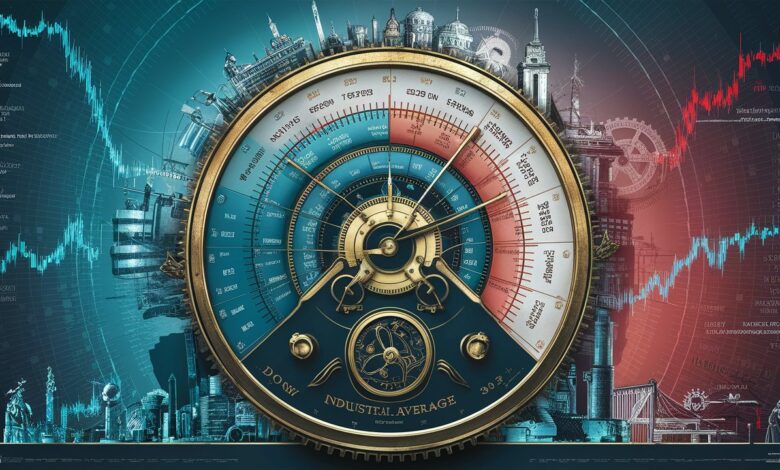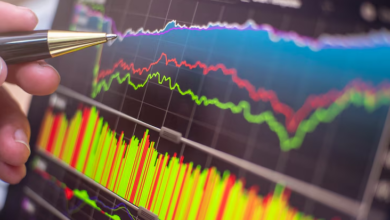The Dow Jones Industrial Average: Decoding America’s Economic Barometer

Introduction: The Pulse of American Finance
The Dow Jones Industrial Average (DJIA), often referred to as “the Dow,” stands as one of the world’s oldest and most influential stock market indices. Created in 1896 by Charles Dow and his business partner Edward Jones, this benchmark initially tracked 12 industrial companies but has evolved into a global barometer of U.S. economic health. Unlike capitalization-weighted indices like the S&P 500, the Dow employs a unique price-weighted methodology, where stocks with higher share prices exert greater influence on index movements. Comprising 30 blue-chip corporations across diverse sectors—from technology giants like Microsoft to financial institutions like Goldman Sachs—the Dow reflects broader economic trends despite its selective composition. Its milestones, such as surpassing 40,000 points in May 2024, capture investor sentiment and macroeconomic shifts, cementing its role in financial discourse 28.
1. Historical Evolution: From Industrial Roots to Modern Benchmark
The Dow launched with 12 companies primarily in railroads, cotton, and oil. By 1928, it expanded to 30 components, adapting to economic transformations through periodic reconstitutions. Early constituents like U.S. Steel symbolized America’s industrial might but were later replaced by firms aligned with emerging economic drivers. For instance, 1997 saw the addition of Walmart and Johnson & Johnson, reflecting consumer and healthcare sectors’ growing clout. Recent changes highlight technological dominance: in 2024, Amazon replaced Walgreens following Walmart’s stock split, while NVIDIA supplanted Intel, underscoring AI’s market impact. Sherwin-Williams also joined, replacing Dow Inc., marking just the 53rd adjustment since 1896. These changes ensure the index remains relevant, though critics argue its narrow scope limits representativeness 28.
Table: Key Milestones in DJIA History
| Year | Event | Significance |
| 1896 | Index launched | 12 industrial companies |
| 1928 | Expanded to 30 stocks | Broadened sector coverage |
| 1987 | “Black Monday” crash | Largest one-day percentage drop (22.61%) |
| 2020 | Added Salesforce, Amgen | Replaced ExxonMobil, Pfizer |
| 2024 | Added Amazon, NVIDIA | Reflected tech and AI growth |
2. Methodology: The Mechanics of a Price-Weighted Index
The DJIA’s price-weighted structure differentiates it from peers like the S&P 500. Each component’s impact depends on its share price rather than market capitalization. For example, a $10 move in a $300 stock (e.g., UnitedHealth) sways the index more than an identical move in a $50 stock (e.g., Intel). Charles Dow originally calculated the average by summing stock prices and dividing by 12. Today, this method is preserved using the Dow Divisor (0.152 as of 2024), which adjusts for stock splits, spin-offs, and constituent changes. The formula is:
text
Copy
Download
DJIA = SUM(Component Stock Prices) / Dow Divisor
This approach has drawbacks: high-priced stocks dominate, and market-cap disparities can skew representation. Despite this, the Dow offers a real-time snapshot of market sentiment, with each point movement reflecting collective price shifts 28.
3. Composition Criteria: Selecting Economic Ambassadors
The DJIA’s 30 components are curated by S&P Dow Jones Indices to mirror “America’s most representative industries.” Selection hinges on:
- Reputation and longevity: Firms must demonstrate stability and growth (e.g., Coca-Cola).
- Substantial market share: Companies should lead their sectors (e.g., Apple in tech).
- High trading volume: Ensuring liquidity and investor interest.
Sector diversification is critical. While initially industrial-focused, the index now spans technology (20%), healthcare (17%), financials (16%), and consumer discretionary (14%). Companies are removed during financial distress or sectoral decline—General Electric’s 2018 exit after 110 years exemplified this. Additions like Salesforce in 2020 highlighted cloud computing’s rise, while NVIDIA’s 2024 entry emphasized semiconductors’ AI-driven relevance 28.
4. Economic Significance: Beyond the Numbers
The Dow serves as a proxy for U.S. economic health due to its constituents’ collective influence. Its performance correlates with GDP growth, consumer spending, and corporate profitability. For instance, its plunge in March 2020 signaled COVID-19’s economic disruption, while its recovery later that year mirrored stimulus-driven optimism. However, limitations exist:
- Narrow scope: 30 companies represent a fraction of the economy compared to the S&P 500’s 500.
- Price-weighting bias: Overemphasizes high-priced stocks irrespective of company size.
Still, milestones like the 2024 breach of 40,000 points symbolize investor confidence in inflation control and AI-driven productivity gains. Institutional investors use Dow-tracking ETFs (e.g., SPDR Dow Jones ETF) for exposure, while media outlets cite it as a daily “mood gauge” 28.
5. Criticisms and Limitations: A Flawed Benchmark?
Critics highlight three key shortcomings:
- Representation gaps: Excludes transportation and utilities (covered by other Dow Jones indices) and underweights smaller firms.
- Methodological bias: A $1 move in Boeing ($200/share) impacts the index 4× more than an identical move in Intel ($50/share), despite Intel’s larger market cap.
- Sectoral imbalances: Tech and finance dominate, potentially overshadowing manufacturing or energy trends.
Consequently, many analysts prefer the S&P 500 for broader market insights. Yet, the Dow’s simplicity and historical legacy sustain its prominence 28.
6. Tracking and Trading the DJIA
Investors access the Dow via:
- Exchange-traded funds (ETFs): SPDR Dow Jones Industrial Average ETF (DIA) mirrors index performance.
- Futures and options: Traded on the Chicago Board of Exchange (CBOE).
- CFDs (Contracts for Difference): Allow leveraged 24-hour trading via platforms like OANDA, though regulatory compliance is essential 810.
Real-time data is available through Dow Jones Newswires APIs, which provide article retrieval and market analytics for institutional use 10.
Conclusion: An Enduring Symbol in Modern Finance
For over 128 years, the Dow Jones Industrial Average has transcended its industrial origins to become a cultural and economic icon. While its methodological quirks and narrow focus invite valid criticism, its ability to distill complex market dynamics into a single, intuitive metric ensures its enduring relevance. As economic landscapes evolve—marked by AI, sustainability, and globalization—the Dow’s periodic reconstitutions will continue reflecting new paradigms. Investors should view it not as a standalone indicator but as one piece of a broader analytical mosaic, complemented by indices like the S&P 500 and Nasdaq. In decoding the Dow, we decode the story of American capitalism itself 28.
Frequently Asked Questions (FAQs)
1. Why is it called the ‘Industrial Average’ if it includes non-industrial companies?
The name is historical. The index originally tracked industrial firms in the late 19th century. As the U.S. economy diversified, so did the Dow, incorporating technology, healthcare, and finance sectors. The “industrial” label remains as a nod to its origins but no longer reflects its composition 8.
2. How often does the DJIA update its components?
Changes occur irregularly, averaging every two years. The index committee adds or removes stocks based on economic significance, sector representation, and corporate performance. Recent changes (e.g., Amazon in 2024) exemplify this adaptive approach 2.
3. Can the Dow be traded in real-time?
Yes. The DJIA is tracked 24/7 via futures markets. Investors use ETFs like DIA for direct exposure or CFDs for leveraged positions. Real-time news feeds, such as Dow Jones Newswires APIs, support data-driven trading decisions 810.
4. Why does the Dow outperform/underperform the S&P 500?
Divergences arise from structural differences:
- The Dow is price-weighted; the S&P 500 is market-cap-weighted.
- The Dow’s 30 stocks vs. the S&P’s 500 create concentration vs. diversification effects.
Tech rallies often lift the S&P 500 more, while industrial booms may favor the Dow 28.
5. What constitutes a “blue-chip” company in the Dow context?
Blue-chips are large, financially stable firms with histories of reliable performance. Dow components typically exhibit:
- Market leadership in their sector
- Minimum 5–10 years of sustained profitability
- High liquidity and institutional ownership
Examples include Visa, McDonald’s, and Home Depot 28.



